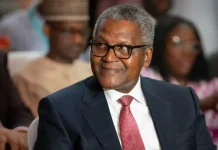The Organisation of Petroleum Exporting Countries, OPEC, on Monday, July 24, revealed that it is making moves to cap Nigerian oil output and called on several members to boost compliance with production cuts to help clear excessive global stocks and support flagging prices.
The cartel has agreed with several non-OPEC producers led by Russia to cut oil output by a combined 1.8 million barrels per day (bpd) from January 2017 until the end of March 2018.
OPEC states Libya and Nigeria were exempted from the limits to help their oil industries recover from years of unrest.
The deal to curb output propelled crude prices above $58 a barrel in January but they have since slipped back to a $45 to $50 range as the effort to drain global inventories has taken longer than expected.
Rising output from U.S. shale producers has offset the impact of the output curbs, as has climbing production from Libya and Nigeria.
A ministerial committee of OPEC and non-OPEC states that monitors the global oil pact said it had agreed Nigeria would join the deal by capping or even cutting its output from 1.8 million bpd, once it stabilizes at that level from 1.7 million bpd recently.
The monitoring committee, known as JMMC and which met in the Russian city of St Petersburg, did not give the timeframe for when this would happen, saying it would track Nigerian production patterns in the next weeks.
The committee did not back capping Libyan output as it said its production was unlikely to exceed 1 million bpd in the near future compared to its capacity of 1.4 million-1.6 million bpd before unrest erupted in 2011 and plunged the nation into chaos.
Brent oil prices rose about 1 percent at about $48.50, helped by news of a cap on Nigeria and by comments from Saudi Energy Minister Khalid al-Falih that the kingdom’s exports would fall to 6.6 million bpd in August as demand at home was rising, effectively representing a cut of 1 million bpd year-on-year, Reuters reports.
He said global stocks had fallen by 90 million barrels, but were still about 250 million barrels above the five-year average for industrialized nations, which is the level OPEC and non-OPEC states are targeting with their output curbs.
Russia and Saudi Arabia face mounting pressure to prop up oil prices. Russia, which is heavily reliant on oil revenues, holds a presidential election next year. Saudi Arabia needs higher prices to balance its budget and support next year’s planned listing of state oil firm Saudi Aramco.














